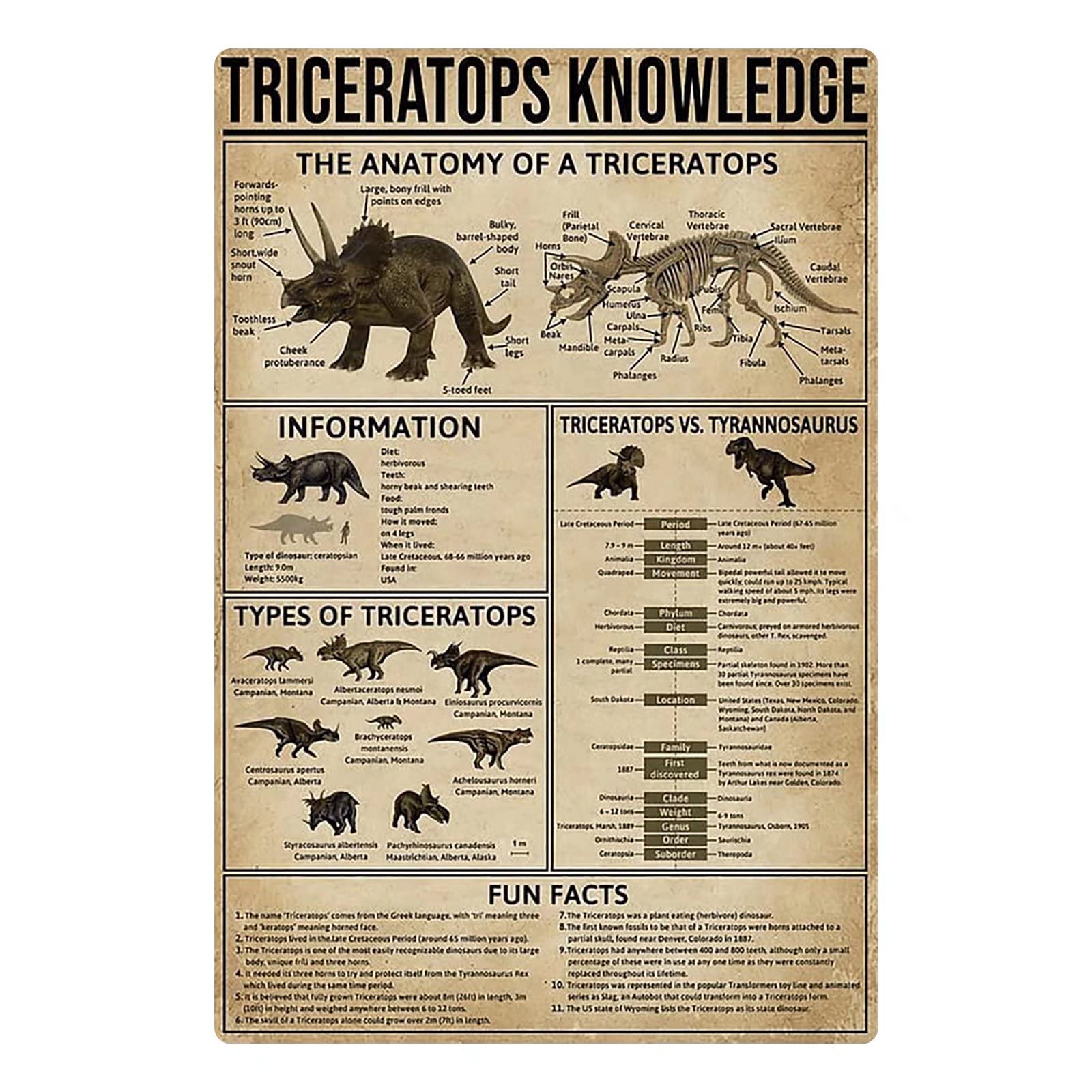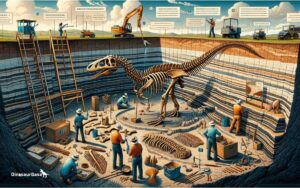3 Unique Horn Features of Achelousaurus Explained
Achelousaurus featured a unique combination of nasal bosses, prominent frill spikes, and an absence of long brow horns. These distinct traits set it apart from other ceratopsids.
Achelousaurus, a genus originating from the Late Cretaceous period, offers a fascinating glimpse into the evolution of ceratopsian dinosaurs. Named after the Greek river god Achelous, this herbivorous creature roamed the floodplains of what we now call North America. Its distinctive skull features have intrigued paleontologists, distinguishing it particularly from its relatives Triceratops and Centrosaurus.
The lack of pronounced brow horns suggests a different approach to defense or display, while the ornate frill and nasal bosses hint at a complex social behavior. As a relatively recent discovery, first described in 1995, Achelousaurus continues to shed light on the diverse adaptations within the Ceratopsidae family and contributes to our understanding of dinosaur biodiversity.

Introduction To Achelousaurus
Imagine a dinosaur with unique horns on its face. That’s Achelousaurus. This dinosaur lived long ago. Its horns were not like other dinosaurs’. Today, we explore the three special horn features of Achelousaurus. Find out what made this creature stand out in the Cretaceous period.
The Discovery Of A Unique Ceratopsid
Scientists found bones in Montana, USA. These were not any dinosaur bones. They belonged to a new type of horned dinosaur, Achelousaurus. Let’s dig into how this discovery changed what we know about the past.
A Peek Into The Cretaceous
The Cretaceous period was a time of many dinosaurs. Achelousaurus roamed the earth. With other giants, it painted a lively picture of this historic era. Join us to look closer at the world of Achelousaurus.

Credit: www.researchgate.net
Horn Configuration Unveiled
Imagine a dinosaur with horns unlike any other. Mysterious and magnificent, Achelousaurus, a late Cretaceous herbivore, captures our fascination. Its horns tell a tale not just of its own life but also of deep evolutionary secrets. Here, we expose the unique features of the Achelousaurus’s horn configuration. Let’s discover what sets this dinosaur apart from its kin.
Evolving From Ancestors
Achelousaurus horns evolved over time. This dinosaur has a distinctive horn pattern, which sheds light on its ancestry.
- Bosses: Rough, bumpy patches instead of typical horns.
- Nasal boss: A large, prominent swelling on the nose.
- Parietal horns: Curved and backward-pointing horns on the back of the head.
| Feature | Description |
|---|---|
| Nasal boss | A signature bump replacing the traditional horn. |
| Parietal horns | Located at the rear, suggesting a shift from predecessors. |
The Significance Of Horn Variation
The varied horn structures offer clues into the Achelousaurus’s lifestyle and survival strategies.
- Defense mechanisms: Horns and bosses potentially served to protect from predators.
- Social Interaction: Distinct features may have been used to signal other members of the species.
- Sexual selection: Standout horn patterns could attract mates.
Through studying these horn variations, scientists can better understand the diversity and adaptability of dinosaur species.
Nasal Boss: A Distinctive Trait
The Achelousaurus stands out in the dinosaur kingdom. Among its striking features, the nasal boss draws the most curiosity. Unlike horns or crests found on other dinosaurs, this bulge of bone adds to its unique profile. Let’s delve into the nasal boss and its fascinating mysteries.
The Mystery Of The Nasal Boss
Scientists often ponder the purpose of the Achelousaurus’s nasal boss. Does it relate to species recognition, or is it more about defense? Perhaps it played a role in attracting a mate? Current theories suggest it could also have been a status symbol amongst peers—a physical display of dominance or maturity.
Comparisons With Other Species
When cast against relatives like the Triceratops, the nasal boss seems less dramatic. Yet, it’s this subtlety that makes the Achelousaurus intriguing. Unlike the sharp horns on a Triceratops, the Achelousaurus’s boss suggests it might have engaged in less aggressive behavior.
| Dinosaur | Feature | Possible Function |
|---|---|---|
| Achelousaurus | Nasal Boss | Status Symbol, Defense |
| Triceratops | Horns | Defense, Combat |
Distinguishing features like the nasal boss set the Achelousaurus apart. These unique traits ignite imagination, encouraging further research and discussion.
Parietal Horns: Form And Function
The Achelousaurus, a fascinating dinosaur once roaming the Earth, possessed hallmark features known as parietal horns. These horns did not just add to its striking appearance but carried significant roles in its ecology and behavior.
Structure Of The Parietal Horns
Parietal horns of the Achelousaurus were robust protrusions from the back of its skull. Forming a recognizable silhouette, these horns had a unique structure.
- Solid bone served as the core material.
- Distinctive shapes varied amongst individuals, possibly indicating age or sex.
- The horns curved slightly backwards, suggesting a nuanced purpose.
Implications For Behavior And Defense
| Behavioral Trait | Defense Mechanism |
|---|---|
| Social Hierarchy | Predator Deterrent |
| Mate Attraction | Combat with Rivals |
The parietal horns played a dual role. Social interactions among Achelousaurus may have relied on these features for establishing dominance or attracting mates. In confrontations, their horns provided defense against predators and acted as weapons during rival battles.
Squamosal Horns: The Diagnostic Feature
Achelousaurus, a relic from the Late Cretaceous, bears a unique signature: its squamosal horns. These distinctive horns not only differentiate it from fellow dinosaurs but shine a light on the intriguing anatomy and behaviors of these ancient giants. Let’s delve into the squamosal horns, which serve as a diagnostic feature for identifying Achelousaurus.
Description And Positioning
The squamosal horns, located on the skull of Achelousaurus, are prominent bone protrusions. Like a crown adorning the head, they are perched above the creature’s eyes, projecting sideways. Their positioning is crucial for recognition. Not all dinosaurs in the ceratopsian family exhibit these features, making Achelousaurus stand out.
- Sturdy and significant in size
- Oriented laterally from the skull
- Altered shape compared to other ceratopsians
Interpretations Of Their Role
While the true purpose of squamosal horns remains a topic of debate, several theories exist. These range from defense mechanisms to social display and species identification. Scientists propose these horns may have been used to ward off predators or to compete for mates during the breeding season.
| Theory | Possible Purpose |
|---|---|
| Defense | Protection against predators |
| Social Display | Attracting mates, intimidating rivals |
| Species Recognition | Identifying and communicating with others of its kind |
These interpretations highlight the potential multifaceted roles that squamosal horns could have played in the lives of these majestic dinosaurs.

Credit: en.wikipedia.org
Insights From Horn Wear Patterns
The enigmatic Achelousaurus, a herbivorous dinosaur known for its distinctive horns, offers intriguing insights into its past. Fossil evidence reveals significant details through horn wear patterns. Scientists unpeel history layer by layer, studying these prehistoric clues.
Analyzing Age-related Changes
Horn development in Achelousaurus tracks growth and maturity. Young specimens show smooth horns; mature individuals reveal wear and tear. This wear suggests horns played a vital role in the dinosaur’s life, particularly in terms of behavior and social interaction.
- Smooth horns: Indicative of juvenile dinosaurs.
- Rough, worn horns: Signs of older, socially active Achelousaurus.
Through meticulous examination of horn texture and shape, researchers have decoded important life stage indicators.
Clues To Achelousaurus Lifestyle
Horns aren’t just for show. They tell stories of survival and interaction. Achelousaurus horn wear patterns hint at head-butting behaviors, perhaps in contests for mates or territory.
| Horn condition | Behavior indication |
|---|---|
| Intact, sharp horns | Less confrontational lifestyle or younger age |
| Blunted, worn horns | Frequent sparring, active lifestyle |
Bones surrounding the horns bear witness to lifestyles rich in physical activity. Careful analysis reveals a resilient creature, adept at navigating prehistoric challenges.
Reflections On Horn Development
The Achelousaurus, a unique dinosaur with fascinating horn features, raises intriguing questions about horn evolution. Let’s delve into the distinctive aspects of its horn formation, revealing a prehistoric narrative about adaptation and survival.
Evolutionary Perspectives
The Achelousaurus’ horns were not merely for show. They tell us stories of evolution. Bold clues hint at a dynamic past, adapting to environmental challenges. We see patterns in their horns that reflect selective pressures, potentially linked to combat or display.
- Changing Environments: Shifts in climate likely influenced horn shapes.
- Defense Mechanism: Horns may have evolved to fend off predators.
- Social Significance: Horns possibly played a role in attracting mates.
Horn Development In Juvenile Achelousaurus
Juveniles of this species present a fascinating look at developmental stages. Starting as bumps, their horns undergo remarkable changes as they grow. This progression sheds light on how these creatures adapted throughout their life span.
| Age | Horn Development Stage |
|---|---|
| Birth | Nub-like protrusions |
| Juvenile | Developing horns, varying in size |
| Adult | Full-grown, distinctive horns |
By examining these young dinosaurs, we uncover evolution in motion. Not only does size change, but shape and function may transform as they mature. Such discoveries bring us closer to understanding dinosaur ecology.
- Skeletal Growth: Horn growth linked to overall skeletal development.
- Functional Shift: Horn utility changes from juveniles to adults.
- Morphological Variability: Different horn shapes across individuals hint at genetic diversity.

Credit: en.wikipedia.org
Frequently Asked Questions For 3 Unique Horn Features Of Achelousaurus Explained
What Are Some Facts About Horned Dinosaurs?
Horned dinosaurs, or ceratopsians, lived during the Cretaceous period. They’re known for their impressive skull frills and facial horns. Triceratops is one of the most famous species, easily recognizable by its three horns. These plant-eating dinosaurs roamed in herds across ancient North America and Asia.
What Kind Of Dinosaur Has 3 Horns On Its Head?
The Triceratops is the dinosaur known for having three horns on its head. It roamed North America during the Late Cretaceous period.
What Is A Large Dinosaur With Three Horns?
The large dinosaur known for having three horns is the Triceratops. This iconic herbivore also featured a large bony frill at the back of its skull.
What Did Triceratops Use Their Horns For?
Triceratops likely used their horns for defense against predators, as well as for dominance and display purposes within their own species.
Conclusion
Exploring the Achelousaurus has revealed its astounding horn features, each a testament to its unique place in dinosaur evolution. These adaptations undoubtedly served critical roles, possibly in defense or social interaction. For paleontology enthusiasts, the Achelousaurus remains a remarkable subject, its distinctive horns a window into a bygone era of giants.
RedirectTo: _3uniquehornfeaturesofachelousaurus_ to dive deeper into the world of these fascinating creatures.





